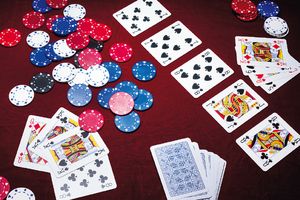Omaha poker hands: Handselection in Omaha
 One of the most important concepts you need to become a successful pot limit omaha player, is an understanding of preflop handselection. Contrary to the more popular no limit hold’em you see on TV, it is quite difficult to make a direct hand chart for omaha poker and this will probably not be rather useful or the most productive way to go about it.
One of the most important concepts you need to become a successful pot limit omaha player, is an understanding of preflop handselection. Contrary to the more popular no limit hold’em you see on TV, it is quite difficult to make a direct hand chart for omaha poker and this will probably not be rather useful or the most productive way to go about it.
Three possible qualities
Instead it is useful to think about omaha poker hands as having three distinct possible qualities. When playing pot limit omaha you are dealt four cards, which can be divided into two types of hands or qualities. Firstly; the hand can contain one or two pairs, and secondly; the hand can be connected in different ways making straight opportunities possible.
Furthermore the hand can be improved by one or two suits making potential flushes possible. Each type of hand quality can be combined with one another making different kinds playable 2 card hands. This in turn makes it possible to put forward a fairly simple criterion for the evaluation of each hand’s strength:
– How many possible combinations of playable 2 card hands does the omaha hand contain?
And self-evidently the more combinations the hand holds, the stronger is the omaha poker hand. We now turn to each of the different hand qualities to explain how they are to be evaluated using the criterion set out above.
High pairs in Omaha
Contrary to no limit hold’em high pairs have little value by them self in pot limit omaha. This is mainly due to the fact that they rarely hold up with more than one opponent in the pot. Consequently it is very important to have other possible combinations of playable hands.
If we do not have other combinations of hands, the high pair will be reduced in strength, and we will be playing almost exclusively for set value by hitting one of the remaining two cards in the deck.
On the contrary the hand strength will increase heavily, when the high pair can be combined with the rest of the cards in the hand, e.g. through straight or flush possibilities. To illustrate this point four different possible combination of AcAh is shown below against another random strong hand:
AcAh7d2s vs. QcJh10h9c = 52 % vs. 48 %
AcAhKdQs vs. QcJh10h9c = 58 % vs. 42 %
AcAhKcQs vs. QcJh10h9c = 64 % vs. 36 %
AcAhKcQh vs. QcJh10h9c = 70 % vs. 30 %
As it appears from the example, the hand value almost increases proportional with the amount of combinations. At the same time it is worth emphasizing that this is with only one opponent in the pot. With more than one player in the pot our AcAh might actually be behind:
AcAh7d2s vs. QcJh10h9c vs. 8s8d7s6d = 27 % vs. 39 % vs. 34 %
This clearly illustrates how important the amount of combinations is, and why we should be careful playing high pairs, which are not, suited or connected in any way.
